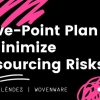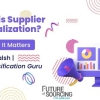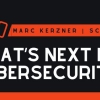Large organisations face very similar IT challenges. Regardless of industry, they need to continually innovate, increase profits, decrease costs and drive efficiencies throughout their operations.
Considering that as much as 80 per cent of an organisation’s IT spend goes towards maintaining systems and infrastructure, it’s no surprise that many business leaders are looking to migrate their IT foundations to more functional, up-to-date technologies.
It is widely acknowledged that IT Service Management (ITSM) is pivotal to any businesses’ success, continuity and competitiveness. However, with an expected lifespan of five years, we see that many businesses think they have the correct solutions in place, but behind the scenes they are struggling with legacy ITSM systems that are either out-dated or not fit for purpose.
Considering this, it’s not surprising that approximately 38 per cent of migration projects fail, leading to serious disruption of services and unnecessary stresses and costs.
Upgrading ITSM is not easy, and the big question is how to find a way to ensure business continuity throughout a migration project with a guarantee of zero disruption to mission-critical services.
If it’s not broken, why fix it?
Large organisations that have been in business for more than twenty years typically depend on a complex mix of old and new technologies across their operations. While many of these older technologies still perform the task at hand, they’re hampering many businesses from embracing the latest digital technologies.
The reasons for the complex mix of ITSM systems currently found in most large businesses are the result of years and years of mergers and acquisitions. Each M&A deal brings in another ITSM systems, so businesses are left with two or more legacy systems which can never integrate properly and add additional complexity and duplication.
Business leaders agree: nine out of ten IT heads claim legacy systems are preventing them from harnessing the digital technologies required to grow and become more efficient (according to Vanson Bourne).
The complexity of legacy ITSM tools means that many organisations are reluctant to make changes. Each product or service they support is generally assisting to maintain the SLA through hundreds – if not thousands – of applications and systems, processes and components. A small change to one system component can have a huge knock-on effect across the business. However with smaller, more nibble companies increasingly winning market share, large cumbersome organisations are looking at ways to re-invent their ITSM foundations in support of future digital initiatives.
Re-invent the foundations
Organisations typically face three options when evaluating an ITSM modernisation project:
1. Do nothing, and continue to manage the existing ITSM infrastructure
2. Rip out and replace the entire ITSM infrastructure
3. Migrate to the latest and best ITSM architecture included in Gartner’s Magic Quadrant for ITSM tools
Considering the opportunities presented by the digital world we now live in, companies cannot afford to do nothing. In addition, bulldozing the entire infrastructure and starting again is costly, and highly likely to cause considerable downtime and disruption to services. However by working with a partner and migrating towards a modern digital architecture, organisations can ensure mission-critical services remain up and running – with no disruption.
Three success factors
Any large-scale ITSM migration project must offer organisations a guarantee of zero-downtime, total business stability and no disruption to client services. Achieving this is difficult without the right partner in place.
Businesses looking to migrate their legacy infrastructure should consider three core competencies in any partner.
1. Project management
A dedicated project management team – available 24/7 – should lead on any migration project. They should take full accountability of the project’s success, overseeing and ensuring a full migration path is in place (supported by robust SLAs that keep the project on track). They must also demonstrate proven success in delivering large-scale migration projects. Ideally, it should help businesses benefit from nearshoring development and project management services to reduce costs.
It is also vital that the project management team follows ITIL or IT4IT disciplines.
2. The right tools
Any partner must also demonstrate specific technical expertise in facilitating market-leading ITSM toolsets, such as ServiceNow, Remedy or HP Service Manager.
There is much to consider for any business taking on the ITSM migration challenge, including: incident generation tools, reporting databases, CMBDs and integration implementation. There also needs to be a handshake exchange between the existing ITSM and external ITSMs to cover incidents, regular upgrades and changes, and problem and service catalogs. Native and non-native communication can be easily overcome by using the right qualified IPAAS component.
It should also have its own partnerships with major software and hardware vendors in place.
3. The right deliverables with the correct procedures
The right partner will also have its own understanding of project deliverables and procedures to help keep projects on budget and generating expected results.
The essence is years of experience and fine-tuning pf project methodologies, an experience that many existing in-house teams would be missing out on, while an external project team should integrate and work very closely with the operations team and account management.
The best results, based on years of refining best practice are to split the project down the following deliverables:
• Data model exports and on boarding
• User acceptance testing
• Reporting modules
• CMDB
• External integration implementations for incident, problem, change and catalogue.
• Asset management
• Self-service portals
• Incident generation via sys/app monitoring
• IPAAS service for situation where endpoints cannot talk natively.
By choosing the right partner, companies can expect:
- Secure migration: zero disruption to existing services – no impact on customers.
- Budget optimisation: reduce operating costs by migrating legacy infrastructures by X per cent.
- Security: data remains secure and always available throughout the migration process. No loss!
- Improved service: talented, qualified and experienced staff, alongside the highest partner accreditations and delivery methods (ITIL, PMP, PRINCE2, and Six Sigma) deliver an enhanced service.
- Measurement: robust SLAs and KPIs keep migration projects on track and under budget.
Conclusion
Staying ahead of competitors is not easy. It requires the ability and agility to seize emerging opportunities. By moving away from older and legacy ITSM systems to a more contemporary and flexible business model, companies will be better poised to seize future opportunities within budget and at a reasonable expense.







